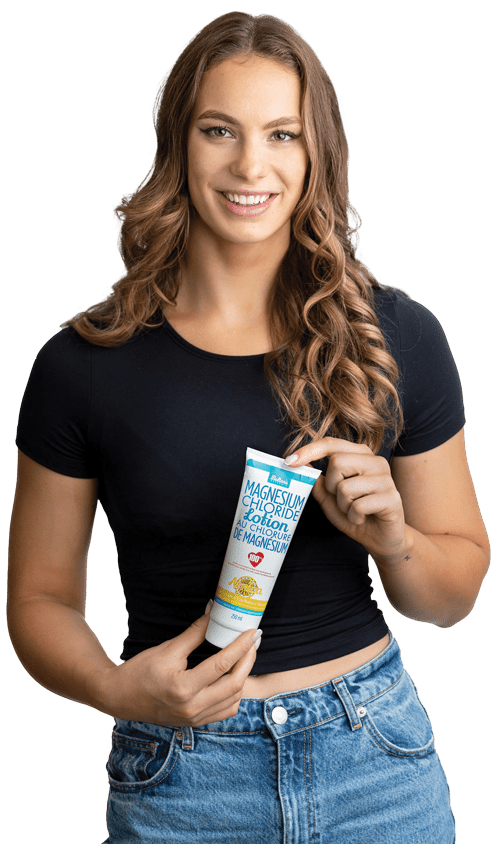In the world of wellness, magnesium is gaining recognition as a vital mineral for various bodily functions. While dietary sources and supplements are the traditional routes for magnesium intake, topical magnesium absorption is a growing trend. But how does it work, and what does science have to say about it? In this article, we’ll explore the fascinating science behind topical magnesium absorption.
Why Magnesium Matters
Before we dive into the science, let’s understand why magnesium is essential for our bodies. Magnesium is involved in over 300 biochemical reactions in the body. It plays a role in muscle contraction, nerve function, energy production, and bone health. However, many people don’t meet their daily magnesium needs through diet alone.
Topical Magnesium: A Different Approach
When we think about magnesium supplementation, we often envision popping pills or mixing powder into our drinks. However, topical magnesium takes a different route. Instead of being ingested, it’s applied directly to the skin in the form of oils, creams, or sprays.
The Skin: Your Body’s Largest Organ
Your skin is not just a protective barrier; it’s a dynamic organ with the ability to absorb substances. The outermost layer of your skin, called the stratum corneum, is made up of dead skin cells. Beneath this layer lies the epidermis, which contains blood vessels and sweat ducts. It’s through this layer that topical magnesium can make its way into your bloodstream.
The Role of Ions
To understand how magnesium is absorbed, we need to talk about ions. An ion is an atom or molecule with an electrical charge, either positive (cation) or negative (anion). Magnesium is a cation, carrying a positive charge.
When you apply topical magnesium, it exists in the form of magnesium chloride or magnesium sulfate, commonly known as Epsom salt. These compounds readily dissociate into magnesium ions (Mg²⁺) when in a solution, such as the moisture on your skin.
The Dance of Absorption
Here’s how the process works:
-
Contact: When you apply topical magnesium to your skin, it makes contact with the moisture on the skin’s surface.
-
Dissociation: The magnesium chloride or sulfate in the solution dissociates into magnesium ions (Mg²⁺). These ions carry a positive charge.
-
Diffusion: Through a process called diffusion, magnesium ions move through the epidermis and into the blood vessels beneath. This is driven by the concentration gradient – ions move from an area of higher concentration (your skin) to an area of lower concentration (your bloodstream).
-
Transport: Once in your bloodstream, magnesium ions hitch a ride on your red blood cells. This is a crucial step because it allows magnesium to be transported throughout your body to where it’s needed.
-
Biological Activity: Inside your cells, magnesium ions participate in various biochemical reactions. They may help relax muscles, support nerve function, and regulate enzyme activity.
Factors Affecting Absorption
Several factors can influence the absorption of topical magnesium:
-
Skin Condition: Healthy, unbroken skin is more efficient at absorbing magnesium than damaged or irritated skin.
-
Duration of Contact: Longer contact time between the magnesium product and your skin can enhance absorption.
-
Concentration of Magnesium: Products with higher magnesium concentrations may provide more significant absorption.
-
Form of Magnesium: Different forms of topical magnesium (e.g., oil, cream, spray) may have varying absorption rates.
-
Temperature: Warm skin may facilitate better absorption compared to cold skin.
Absorption Rates Compared to Oral Intake
One common question is how topical magnesium absorption compares to oral intake. The truth is, both methods have their advantages and may serve different purposes.
-
Topical Absorption: This method bypasses the digestive system, making it a good choice for people with digestive issues that hinder nutrient absorption. It’s also favored by those who want to avoid the potential digestive discomfort associated with oral magnesium supplements.
-
Oral Intake: While oral supplements have lower absorption rates compared to topical application, they’re still effective. They provide a more comprehensive source of magnesium for overall health, and specific formulations can target different needs, such as magnesium citrate for digestive health or magnesium glycinate for relaxation.
Safety and Considerations
Topical magnesium is generally safe when used as directed. However, it’s essential to do a patch test before widespread application to ensure you don’t have a skin sensitivity or allergy to the product. If you experience any adverse reactions, discontinue use.
It’s also crucial to consult with a healthcare provider before starting any new supplementation, whether oral or topical, especially if you have underlying health conditions or are taking medications.
In Conclusion
The science behind topical magnesium absorption is a fascinating journey through your skin’s layers and the role of ions in your body. While it may not replace oral magnesium supplements entirely, topical application offers a unique and efficient way to boost your magnesium levels, especially if you have specific health concerns or digestive issues.
Remember that the effectiveness of topical magnesium varies among individuals. Some may experience immediate benefits, while others may require more time for their magnesium levels to reach an optimal balance. As with any wellness routine, consistency is key, and it’s essential to listen to your body’s signals.
So, whether you choose to supplement with topical magnesium, oral magnesium, or both, you’re on the path to supporting your body’s essential functions and enjoying the numerous benefits of this vital mineral.



